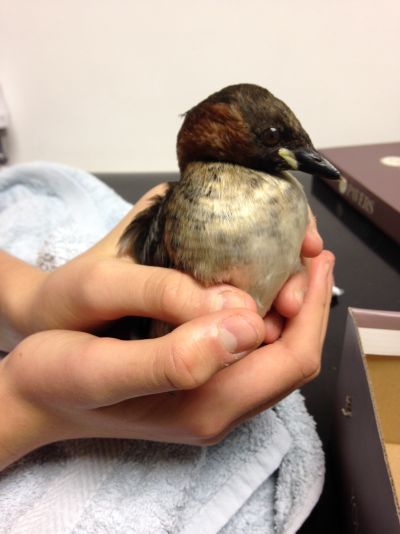
Posted By:
The job of a veterinary surgeon can be challenging at times, but the tough experiences are usually outweighed by the rewarding moments. Working with wildlife can be an exciting ‘by-product’ of being a small animal vet in general practice, and there are few more rewarding moments in the career than releasing a wild animal back into its natural habitat. Wild bird releases are particularly special, as there is a rare chance to get up close to such fascinating creatures – and the sight of wings flapping into the distance can be as impressive as it is dramatic.
Birds of prey must be one of the most awe inspiring groups of birds; their wingspan, talons and hunting ability all make for an impressive animal. Often though, they can be vulnerable to humans and in particular our cars; injured birds can sometimes be found on the roadside that need veterinary attention. Buzzards are one of the largest birds of prey found in England, and they can catch the eye soaring by the roadside or perched on a telegraph pole. A kind member of the public presented a dazed and stunned buzzard to the practice one afternoon that had been found in the middle of the road, presumably glanced by a car.
It is important to remember that these birds can be easily stressed in such an alien environment to their own, so after a brief exam to rule out any obvious life threatening injuries, they are usually left in a dark and quiet kennel for a while. After the bird had recuperated from its capture and transportation, it was then examined with the help of a brave and assisting nurse (wearing heavy garden gloves, or gauntlets) to check for more subtle injuries – any broken wings or legs, muscle wasting indicating an illness or inability to hunt, mouth infections, or damage to the eyes.
The aim of treating wild birds of prey in practice is to get them out of suffering, or out of captivity, as soon as possible. If an injury is found which would affect their ability to hunt in the wild, such as a loss of vision or a fracture that would be difficult to heal and achieve good quality flight, then the kindest course of action is to euthanise the bird. Otherwise, it is a case of ruling out any damage, treating with necessary medication, and arranging immediate release.
Fortunately the buzzard was given a clean ‘bill’ of health after a thorough examination and X-Ray (following a mask of anaesthetic gas) and was set for release after a pain relief injection. It is important to release these birds near to where they are found, so they are familiar with their territory, and to ensure that it is a suitable hunting ground that can support the bird. With the details of the bird’s location, the buzzard was taken to the grounds of Mendip Crematorium, contained in a cat carrier. The staff confirmed there were often several buzzards seen hunting in that location, and were happy for the bird to be released there. The carrier was placed on the floor of the field, the door was slowly opened, and the buzzard took a few steps out, looked around and then launched off impressively, flying towards a big tree in the distance.
More recently, another even more unusual wild bird was brought in to a morning surgery. Little grebes are not the most well known of water birds – they are seldom seen in busy park lakes and can be quite elusive. Therefore it was a surprise when the grebe was found in the middle of Shepton Mallet, found helpless on the roof of a furniture store. Presumably it was flying over, and had mistaken metallic sheen on top of the building for a body of water. Initially it was thought that the grebe was injured, as it allowed capture and refused to move. In fact, grebes cannot really walk at all on solid ground – spending most of their life on water. An X-ray could therefore be taken without the need of anaesthetic, as the bird sat obligingly on the radiography table, and fortunately showed no injuries.
A buoyancy test was then performed, to check that the bird would be able to be released back onto water. A large plastic container was filled from the tap, and to much delight, the aquatic bird was able to float rather nicely. Kilver Court Gardens were happy to accommodate the grebe – it was felt that the quiet lakes within the grounds would be a fitting habitat. Once placed on the surface of a large pond, the grebe started to paddle, looked around, and then took a dive down beneath, to emerge happily at the other side amongst the reeds.
Both of these releases went perfectly and were fortunately captured on video to preserve such a special moment. There are plenty of other birds brought to the practice, including blackbirds, crows, pigeons and owls, and unfortunately not all of them receive the same fate, however all will be checked and either relieved of their suffering, transferred to a special wildlife unit for rehabilitation, or if we're lucky given a helping hand for an immediate return to the wild.
Check out our Facebook page for the video of Greg and Callum releasing the Grebe.
As our feline friends get older there are a few conditions...
Another winter discussion group season is now behind...
We used a client’s new Morris Remote Control...
©2024 Shepton Veterinary Group Ltd., All rights reserved.
Privacy Policy • Terms & Conditions • Cookie Policy